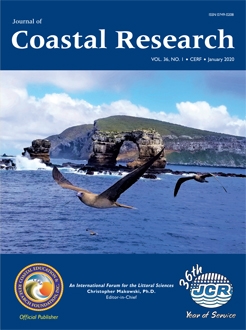Yin, Z.; Wang, Y., and Jia, Q., 2020. Hydrodynamic characteristics of a pneumatic breakwater with combined wave–current actions: A numerical investigation. Journal of Coastal Research, 36(1), 196–203. Coconut Creek (Florida), ISSN 0749-0208.
A pneumatic breakwater is a new type of coastal protection structure with mobility and environment-friendly advantages. A series of physical experiments with two-dimensional (2-D) numerical modeling was conducted to investigate the hydrodynamic characteristics of a pneumatic breakwater under wave–current action. The numerical model consists of the Reynolds-averaged Navier-Stokes (RANS) equations, the renormalization group (RNG) k-ε turbulence model, and the volume of fluid (VOF) method. An additional mass source term was added to the continuity equation to generate the desired air bubbles, and it was well validated with the related experimental data. The wave transmission coefficient (Kt) of a pneumatic breakwater was explored in relation to the incident wave height (Hi), wave period (T), air flow rate per unit width (q), and depth-averaged current velocity to wave phase velocity ratio (U/C) in both wave-alone and wave–current fields. The results indicated that Kt of the pneumatic breakwater in a wave-alone field increased with increasing Hi and T and decreased as q increased. Additionally, Kt of waves following a current increased with increasing U/C, while that of waves opposing a current increased up to a certain value before decreasing with U/C. Finally, the wave energy flux parameter was used to investigate the energy damping effect of the pneumatic breakwater in a wave–current field.





